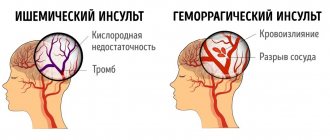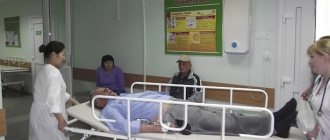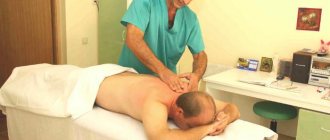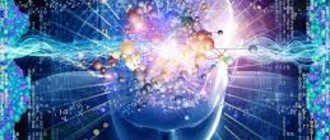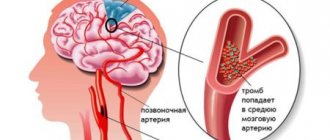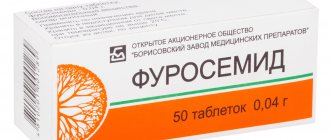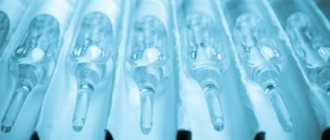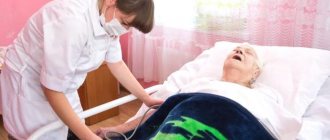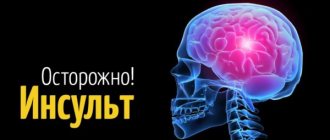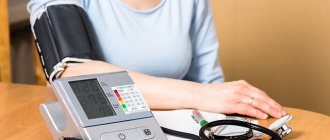Stroke is a serious illness that causes physical impairment in the form of partial paralysis of the body, as well as a whole host of consequences from the nervous system. A prerequisite for rehabilitation is the use of special simulators. Doing exercises at home after a stroke plays an important role.
A set of measures provides the opportunity to quickly restore motor activity and improve a person’s mental state. Let's find out what exercise equipment should be used to recover after a stroke, and consider effective methods of physical therapy.
"Shagonog"
Doctors advise patients who have suffered a stroke to regularly use the Shagonog simulator. Exercises on the device make it possible to restore mobility of the lower extremities. The principle of operation of the device is quite simple. The simulator has the form of a carriage with a stand where the leg is placed. The limb is secured using a series of fasteners. Loads are created due to the operation of the electrical mechanism.
The solution seems most relevant for bedridden patients. Since organizing classes using the device does not require taking a vertical body position. The simulator simulates the loads that occur while walking. The result is a progressive restoration of healthy muscle tone in the lower extremities. The main task when using the simulator is to prevent atrophy of the leg muscles. The device is manufactured individually in accordance with the patient’s body parameters.
Active physical activity
A person is allowed to engage in active activities by a doctor only after the end of the acute period, when he is in clear consciousness and feels satisfactory.
Gymnastics in a lying position
This is the first set of exercises that a person performs independently. To do this, he must be sufficiently prepared by the staff of the medical institution with the help of passive gymnastics and massage.
The following movements are available for bedridden patients:
Flexion and extension of all joints of the arms - fingers, hand, elbow, shoulder. To get started, just repeat a couple of times, increasing the number of approaches every day.
Exercises for the eyes and restoration of visual functions.
Turns the head left, right, down, up.
Flexion and extension of the legs at the knees, rotation of the foot.
Complexes in a standing position
You can begin standing movements when all the previous exercises are easy for a person and he can hold his body in an upright position:
- hands below, slowly raise them, inhale, lower them as you exhale;
- We put our hands on our belts, turn our body left and right, trying not to move our legs and pelvis;
- squats;
- bends;
- lunges;
- swings and walking in place.
Motomed Viva 2
The simulator is used to exert loads on the lower and upper limbs. Passive activation of mobility is achieved by powering the device with an electric motor. Additional stimulation of atrophied muscles is carried out by attaching electrodes to the body, delivering appropriate impulses to the tissue. Small current discharges are synchronized by the device’s on-board computer with the pedaling speed.
The Stroke Recovery Trainer is equipped with a convenient display. The presence of an electronic control system allows the patient to customize the operation of the device to individual needs. Regular rotation of pedals on the device ensures progressive growth of muscle mass, as well as providing feasible loads on the organs of the cardiovascular system.
When to start training
Intensive treatment for patients who have suffered stroke is carried out for at least 4-5 days. At this time, physical activity is contraindicated. Therapeutic and preventive measures, including simple gymnastics to develop the legs and fingers after a stroke, are carried out no earlier than 5-6 days later.
The beginning of the rehabilitation period depends on various circumstances. If the pathology is mild, rehabilitation begins after 8 or 10 days. Recovery with the help of simulators begins 14-17 days after stroke. First, the patient studies in the hospital, then at home.
On the first day, the patient is on a gentle regimen; a gradual increase in loads is necessary.
During the post-stroke period, recovery is recommended to be carried out with training devices that help develop the limbs; a specialist selects an individual recovery program.
Features of training rehabilitation
Common complications after stroke:
- joint contracture occurs;
- muscle tissue becomes spasmodic and atrophied;
- muscle strength decreases, motor function is limited due to neuronal damage (paresis);
- paralysis.
Mechanotherapy to restore finger mobility after a stroke is carried out using training devices. They help restore lost functions and provide physical stress to joints and muscles.
Mechanotherapy devices normalize the tone of muscle tissue, movements will become coordinated, joint function will improve, and pain during movements will be eliminated. Microcirculatory processes and nutrition of cerebral structures improve. The brain receives more oxygen, metabolism and innervation of motor centers improves.
After a long period of immobility, the patient will develop a psychological block; the person is afraid to remain motionless and becomes unsure of himself.
Thanks to medical simulators, the patient gains control over his myofibers, begins to move, loads his legs, and holds small objects with his hands.
Alter Step
The Alter Step rehabilitation simulator looks like an inclined staircase, complemented by a number of beams. The position of the functional elements of the device is adjustable in height, based on the individual needs of the stroke patient. Horizontal bars provide reliable support for the upper limbs while moving back and forth on an inclined platform. The steps of the exercise machine have a coating that eliminates the possibility of the patient’s feet slipping.
Classes on a step platform enable a person to eliminate the psychological barrier that arises after prolonged adherence to bed rest. The patient is able to train on the device without outside help, putting feasible loads on the lower and upper limbs, as well as the muscles of the shoulder girdle. The design includes a ramp for wheelchair users, which makes it possible to stand up in the simulator independently and proceed to exercise.
In addition to restoring muscle tone and returning normal mobility to the joints of the upper and lower extremities, the rehabilitation simulator provides high-quality cardio exercise. The result of regular exercise is strengthening the whole body, saturating the muscles with oxygen, and returning healthy blood circulation.
Features of training rehabilitation
When a person has a stroke, cerebral circulation is disrupted, leading to serious impairment of motor ability.
Common consequences include joint contracture, muscle atrophy and spasticity, paresis and paralysis.
The brain loses the ability to coordinate and control joints and muscles. Only special events can gradually restore lost functions.
The rehabilitation scheme is strictly individual, complex, the most important element of which is exercise therapy.
Special simulators provide mechanotherapy. Essentially, these are devices, instruments and appliances that provide targeted physical activity to the joints and muscle tissues affected by a stroke. They solve the following problems:
- Normalization of muscle tone. Post-stroke muscle hypertonicity impairs the activity and coordination of joint movement. Exercise machines allow you to restore normal muscle tone, achieve the desired sequence of movement, restore biological feedback and neuromuscular control, and eliminate pain during movement.
- Improving blood circulation and trophism. Controlled physical activity normalizes the supply of oxygen to brain tissue, normalizes tissue metabolism, which has a positive effect on the innervation of motor centers.
- Overcoming the psychological factor. After prolonged immobility, a person develops a psychological barrier, the fear of loss of mobility. He simply loses confidence in his abilities. Exercise machines allow the victim to again learn to control his muscles, walk, load his limbs, and hold objects in his hands.
Important! The advantage of simulators is the possibility of targeted loading of muscles and changing the point of application of the load, regulating the load and amplitude of movement. During the rehabilitation period, they help to gradually restore the relationship of the brain with the limbs and other muscular systems and restore physical fitness.
Anika glove
The Anika finger trainer improves fine motor skills. The result is the restoration of the patient’s ability to self-care, the absence of which is one of the main problems after a stroke. The design is worn on the arm and sends impulses to the muscles through a network of electrodes. The process of biological feedback is launched, which helps bring the small muscles of the limb to increased tone.
In addition to the simulator itself for the arm after a stroke, the device includes software that is installed on the computer. Electronic sensors located on the phalanges of the fingers, hand and forearm record motor activity. The data is transferred to the program. First, the capabilities of a person after a stroke are determined. Subsequently, the software selects exercises for the limb of optimal complexity.
After a series of trial sessions on the arm simulator after a stroke under the supervision of a physician, the patient can proceed to independent therapy at home. During rehabilitation, a person regularly performs a series of tasks proposed by a computer. The operations performed and positive changes are noted in statistical data, which is further analyzed by a specialist. This scheme makes it possible to adjust the lesson plan in real time.
Left-sided hemiparesis after stroke
Hemiparesis means wasting of the muscles on one side, while the other part of the body retains full functionality and remains in its normal state. The severity of the process is determined by symptoms, which depend on individual nuances. These include:
- Age.
- General state.
- Factors contributing to the occurrence of an anomalous phenomenon.
Main signs of hemiparesis:
- Frequent migraines.
- Lack of appetite.
- Unbearable joint pain.
- Weight loss is obvious.
- Accelerated fatigue.
Depending on the location, hemiparesis is divided into two types:
- On the left side – one of the forms of cerebral palsy; complete muscle paralysis is possible.
- Right-sided - observed in adults. The right side suffers (disturbances in movements occur).
The primary reasons for the immediate appearance of right-sided hemiparesis include:
- Stroke.
- Neoplasms in the brain.
- Traumatic injuries.
- Encephalitis.
- Frequent, prolonged headaches.
- Manifestations of multiple sclerosis.
- Development of diabetic encephalopathy.
Diagnostics
Diagnostic measures include:
- Examination of the injured arm/leg.
- Assessment of the performance of the oppressed party.
- Determining the root cause.
- Studies using electromyography, CT and MRI.
Treatment for left-sided hemiparesis includes:
- Exercise therapy and therapeutic gymnastics.
- Physiotherapy (as prescribed by a doctor, for each patient personally).
- Hippotherapy (use of horse movements).
- Reflexology.
- Massage of an injured limb.
- Water procedures include: swimming, dousing, hardening, Charcot's shower.
In more severe cases, drug therapy is prescribed.
"Equos"
The Stroke Recovery Trainer comes in the form of a controller and a lingual plate. The latter is clamped between the teeth and conducts electrical signals through the tongue. Impulses are transmitted to individual areas of the patient's body. The controller records changes in the position of the body and limbs relative to the head. When a person bends forward, a corresponding electrical signal is felt at the tip of the tongue. Moving the body backwards causes the internal part of the organ to be affected. Changing the balance to the left or right starts the process of stimulating the corresponding areas of the tongue with the lingual manipulator.
The above diagram of the simulator for recovery after a stroke helps to normalize the vestibular apparatus. As a result, the lost mobility of the limbs returns, and it becomes easier for the person to maintain the body in a stable position. According to data obtained during a study of the device’s operation, regular training makes it possible to significantly improve coordination of movements and partially restore the speech abilities of a person who has suffered a stroke.
Alternative options
To train the muscles, joints of the arms and legs every day for the rehabilitation of a patient after a stroke at home, you need to work with:
- expanders;
- small dumbbells;
- a gymnastics stick;
- spiked ball;
- glove-shaped clamps for straightening fingers;
- devices that help develop grasping movements and improve coordination;
- devices for the development of fine motor skills.
A horizontal bar, hoop and jump rope will also help the patient. The legs at home are well developed with a step platform that imitates movements on the stairs, strengthening the ankles and knees. On this simulator, the legs step in turn, the patient needs to hold on to the support.
Training for accelerated rehabilitation should be carried out regularly.
At home, you can develop your arm using an elastic bandage. It is tied to form a loop. They perform stretches with the hands, and also train the forearm and shoulder areas. Even in a supine position, the bandage is thrown over a tripod, the ends of the stretching machine are taken with your hands and exercised.
The gymnastic stick for developing arms should be raised to the shoulder area, behind the head, and interceptions are performed in a vertical position.
To develop the limbs, a board is used on which there are various household items (lock, clasp, cord, switch). Every day the patient is required to tie, switch, fasten, unfasten objects in order to improve finger motor skills. Additionally, it is shown to sort nuts, peas, and beans with your fingers.
To prevent contractures and restore hand function, the “Machine” simulator is used. It consists of a pair of plates with a spring mechanism, clamps, and rollers. The development brush is secured with straps so that the palm surface is in contact with the plates. If you press on the plates, their angle of inclination will change, and the wrist joint will develop. The reverse movement will result in bending; a force mode is available for exercise.
Muscle tone and synchronization of movements will be restored thanks to gymnastic balls; fine motor skills of the hands can be developed using a Rubik's cube or plasticine modeling.
At home, with the help of an exercise bike, leg movements will be restored, ankle, knee, and hip joints will be developed. First, they practice on mechanisms equipped with electric motors. These devices will be effective even if there are no muscle contractions. Later, when the patient develops motor activity, simple pedals attached to a stand are used.
Thanks to the exercise bike, muscle strength will improve, joints will become more mobile, and vascular function will improve.
The duration of the first workouts should not exceed 10 minutes; tachypnea, tachycardia, and a feeling of weakness are unacceptable. Before classes, you should consult a neurologist or cardiologist.
Passive gymnastics for limbs
Performing passive gymnastic procedures seems appropriate when a person is temporarily unable to move and needs outside help. Doctors advise doing the following exercises to recover after a stroke:
- Suspend the upper limb with limited mobility in a sling. Rotate, move laterally, bend and straighten your arm every day for half an hour. As you practice, take short breaks of 3-4 minutes.
- Sew the elastic into a ring shape. Place the device on your limbs. Perform fly-outs and fly-ups, overcoming the loads created by the device.
- In order to improve muscle tone of the upper extremities and develop fine motor skills of finger movements, train using gymnastic balls. Using a Rubik's cube gives good results. Similar problems are solved by tying and untying shoelaces, laying out playing cards, and modeling from plasticine.
Why is rehabilitation therapy needed?
The mechanism of a stroke is simple: due to hemorrhage, the normal supply of nutrients to brain cells is blocked; with heavy bleeding, physical pressure is added to different areas of the nerve connections.
Even with appropriate emergency treatment, some cells die, and connections that have been established between areas of the brain since birth are broken. The muscles simply do not have a way to send meaningful impulses from the brain. Partially severe consequences can be eliminated if you work hard in two directions:
- massage and physical therapy to prevent severe muscle atrophy;
- stimulation of the emergence of new connections between neurons.
Exercise promotes normal blood flow, prevents muscle wasting, and at the same time reminds the brain how to use its own body. With systematic training, you can return up to 85% of the mobility and coordination you had before the stroke.
Doctors usually advise combining different types of activities:
- muscle loads with constant visual control of the patient during manipulation (brain training) + development of joints;
- tasks for fine motor skills (sorting small objects, embroidery, knitting) + hydromassage;
- work with exercise equipment (2-4 approaches per day) + relaxing massage, or independent work with massage balls.
Recovery should begin immediately after the patient’s condition has stabilized (the patient is conscious, blood pressure is normal) and continue throughout life.
Hand motor exercise
Exercises while lying down
Doctors recommend that bedridden patients perform rotational movements with their eyes in different directions. At the end of the workout, perform stroking movements in the eyelid area. Finally, do a series of leisurely blinks.
A good solution for patients with extreme limited mobility is head rotation. Move your gaze around, up and down. Tilt your head at a leisurely pace, avoiding sudden movements. During one workout, perform 5-6 movements on each side.
Taking a lying position on your back, grab the headboard of the bed with your palms. Do a series of small chest pull-ups, straightening your shoulders. Keep your lower limbs relaxed. Perform up to 5 pull-ups at a leisurely pace, rest for a few minutes and repeat the procedure.
Gymnastics to improve coordination and balance
How can one learn to walk, what should one do if a person cannot maintain balance? Balance and body coordination are necessary to walk independently without support devices and minimize the risk of falling.
The most effective recovery exercises:
- in a lying position, you need to stretch your left elbow to your right knee in turn and vice versa;
- you should stand on one leg, even if it’s a few seconds at first, leaning on the wall;
- while holding on to one leg, you need to raise the other and hold in this position for several seconds;
- It is useful to walk in a straight line, that is, place one foot directly in front of the other, you can hold on to the support.
After persistent training, the patient will be able to perform these movements without support or outside help and very soon walk independently and confidently.
Seated workout
For rehabilitation purposes after a stroke, use exercises that are easy to perform while sitting. Rest your back on the pillow. Grab the edge of the bed with your hands. Bend back a little and throw your head back. Perform the action while taking a deep breath. Count to three and move your body to the starting position.
Lie back on the edge of your bed with a pillow under your back. Stretch your legs and relax. Raise your upper limbs slowly. On the count of one or two, inhale, smoothly pull your leg towards you and clasp your shin with your palms. Move your knee toward your chest, tilting your head forward. After exhaling, return to the starting position.
Exercises while standing
Take an upright position with your feet shoulder-width apart. Your arms should hang freely along your body. Then smoothly lift your upper limbs and stretch towards the ceiling, taking a deep breath. Describe a wide circle with your hands and return to the starting position. Perform 5-6 repetitions at a leisurely pace.
Stand up, place your palms on your pelvic area, and spread your legs apart. Slowly turn your body to the left while spreading your arms to your sides. Carry out the movement while inhaling. Then exhale smoothly and move to the starting position. Perform 7-8 repetitions on each side.
Useful tips
To ensure that rehabilitation methods after a stroke are extremely beneficial and contribute to the speedy return of mobility, follow these recommendations:
- Avoid overexertion during exercise. After all, training on simulators and physical therapy are used only to tone atrophied tissues, and not to build muscle mass. Start rehabilitation with the simplest movements. Gradually introduce new exercises, increase the intensity and number of approaches.
- Before training, perform massage treatments. Pre-warming the muscles is especially important for sedentary patients.
- Perform systematic training. It is advisable to exercise on special equipment and devote time to physical therapy for at least an hour a day.
- Please be patient. The expected changes during rehabilitation after a stroke do not occur after the first training session. Positive dynamics as a result of daily exercise are usually observed after a few months.
Help yourself
When you look at the photograph of Tatyana Chekalova on the 3rd cover of the magazine, beautiful, big-eyed, cheerful and as slender as the birch tree she hugs, it’s hard to believe that three years ago Tatyana suffered a stroke
, weighed 20 kilograms more and looked, in her words, “an aunt with a shapeless face and swollen eyes.”
However, she managed not only to rehabilitate after an illness in a short time, eliminate facial asymmetry
, restore mobility of the facial muscles and fingers with the help of exercises, but also lose excess weight, “erase” wrinkles and remove a double chin. Today Tatyana begins to share her experience with the readers of the magazine.
Gymnastics after a stroke
In one official report, I found information that these days, every 1.5 minutes one of the Russians experiences a stroke - an acute disorder of cerebral circulation with damage to brain tissue and disruption of its functions. Those who manage to recover from a stroke are truly lucky. However, in order to return to an active full life, they essentially have to start a new life, relearn how to walk, talk, and write. Only the most persistent achieve their goals...
I would never have dared to write about this topic if I had not experienced a stroke
. He insidiously sneaked up on me, taking me by surprise, right at a parent-teacher meeting in my daughter’s class. We were animatedly discussing the upcoming New Year celebration, when suddenly I realized that I couldn’t speak and the ground was disappearing from under my feet.
I somehow got to my house, which is located two steps from the school, and then it turned out that not only could I not say a single word to the daughter who met me, but I was also unable to write her a note. My speech was lost, my lips were disobedient, they only moved a little. The right hand also became paralyzed; the fingers did not obey. The face became asymmetrical. Fortunately, the daughter was not at a loss and called her father. The husband arrived 10 minutes later and called an ambulance. When she arrived an hour and a half later, my condition was as if I was in the very last stage of intoxication...
At the hospital I was diagnosed with an ischemic stroke of the brain.
" I was only 39, and what I heard terrified me. Doctors decided that the main cause of the stroke was high blood pressure. I just had fairly early hypertension, and the stroke may have happened because of it (although when the ambulance doctors measured my blood pressure, it was quite tolerable - 175/90, it used to be higher). Or maybe everything happened due to the stress I was experiencing, although it’s hard to call my condition stress, it was more like an explosion of positive emotions. I had just quit my paid job, started working as a business coach on my own, I had a lot of connections and clients, everything was great, my career was developing rapidly. And apparently, there were too many positive emotions (by the way, now, after the stroke, my blood pressure never rises above 140)…
Finding myself in the hospital, I spent the evening and half of the next day feeling sorry for myself and having difficult thoughts. I think that it is pointless to tell those with whom this has never happened (and may never happen) what dramatic thoughts came into my head. And those who have experienced this probably themselves remember truly animal horror and a feeling of complete helplessness. I felt like I was left behind a sailing ship called “Life”.
The next day, apparently having “dramatized” to my heart’s content, I began to think about how I would now live and work (the question is far from idle, since my profession is closely related to public speaking). And, perhaps out of hopelessness, she suddenly pulled herself together, pulled herself together and took up one of her favorite activities - facial gymnastics (we will talk about it in the next issue of the magazine. - Ed.).
Day after day, I endlessly repeated simple facial exercises that were accessible in my position, and also under the blanket, continuously, like prayers, I whispered tongue twisters with my naughty lips (it was not for nothing that I taught people in my trainings that tongue twisters improve articulation).
From my own practice, I knew that tongue twisters with the sounds “B” and “P” are suitable for training the lips, and to improve the functioning of the tongue, it is best to use tongue twisters with an emphasis on the sounds “L” and “V”. In my situation, when my brains are already “mixed and confused,” I chose a mix of “easy” and complex tongue twisters in meaning and pronunciation.
B—P
Bull, blunt-lipped, blunt-lipped bull. The bull's white lip was blunt.
I drive through potholes, I can’t get out of potholes.
L—V
The queen gave the gentleman a caravel, the queen and the gentleman left in the caravel.
In an open field there is a hill with sacks. I’ll go out onto the hill and straighten the sack.
The cap is sewn, but not in the Kolpakov style; the bell is poured, but not in the Kolokolov style. It is necessary to re-cap and re-cap. The bell needs to be re-belled and re-belled.
There is a butt on the head, a cap on the butt. A shock under the butt, a pop under the cap.
These tongue twisters (especially the last one) not only helped me restore my speech, but also “straightened my brain”: just realizing where the priest is standing and what he’s wearing won’t survive a single stroke!
And so, “indecent” tongue twisters, which are often used during training in very respectable dispatch services of a state scale, give more responsibility when pronouncing. A week later I was already communicating on a mobile phone with relatives, friends and acquaintances, and those who did not know about what happened with me, they asked: “Why do you speak so slowly?” And I was happy: it means that I am again expressing myself clearly and purely, and what I speak slowly (and formulate my thoughts with great difficulty) can be made up for.
My attending physician approved that I was not lying passively, but doing something for myself. He said that under no circumstances should you just lie in bed. Despite the stroke, you can (and should) perform accessible movements, and after discharge from the hospital, engage in feasible sports (walking, skiing, swimming, yoga), there is no need to give up on yourself.
I spent the standard two weeks in the hospital. The day before discharge, my doctor, checking my reactions, asked me to show my tongue, teeth, smile, move my eyebrows and said with satisfaction: “Well, now the muscles of your face work symmetrically. I’ve never seen such a quick recovery.”
However, when I was discharged and went to the clinic to register, they immediately began to prepare me for the disability commission. But that didn't suit me. I got up early, got ready and knitted for hours on end. I know how to knit, but I don’t like it, but here I had to - this activity perfectly develops fine motor skills (and it stimulates the restoration of brain cells). Then I tied the whole family and all relatives.
Then I found a good reflexologist and went to him for acupuncture sessions in the evenings. After acupuncture, my head became clearer and I began to speak better. And then, three months after being discharged from the hospital, I went to a specialized hospital for rehabilitation treatment (outside the city) for a month. There, people who have survived a stroke, heart attack, or severe disasters are treated in non-standard ways: hydrocarbon baths, a therapeutic blanket, sand therapy, acupuncture, etc. That's where I came to my senses completely. Upon arrival home, the local neurologist removed the question of my disability. And just a month and a half after returning home from the country hospital, I conducted my first training on time management (managing my time) after the stroke.
It was in this country hospital for rehabilitation treatment that I took up finger gymnastics
. Then it turned out that, despite the fact that before that I had knitted, done various housework, and even sewed with a needle, my fingers still didn’t work well.
Now I am sure that stroke survivors need to start with finger exercises, and immediately, if their condition allows (and for those who are conscious, it allows), even on the first day after the stroke. I learned about finger exercises after being discharged from the hospital, so I learned to write much later than to speak. This gymnastics is simple, and you just need to do it without being lazy or feeling sorry for yourself. In general, in the most literal sense of these words, you need to pull yourself together.
Finger exercises
1. While sitting or lying down, place your fingers on your knees and spread them slightly. Start lifting one finger of both hands in turn. It’s okay if one arm doesn’t work yet, that’s what gymnastics is for, to develop it. Start with the little finger, ending with the thumb, then work backwards. Repeat the exercise, depending on your success, at least 10 times. The less success you have, the more you will have to work.
2. While sitting or lying down, place your fingers on your knees and spread them slightly. Now twist each finger in turn (on both hands at the same time), first in one direction, then in the other. These movements are not entirely easy even for healthy people. But it is fine motor skills that improve brain function. Therefore, the exercise is useful for absolutely everyone. Repeat it 7 times.
3. While sitting or lying down, wiggle your toes (if you are wearing shoes, take them off during the gymnastics), pull your toes towards you and spread them, then bring them together again. Repeat the exercise 10 times.
4. Connect the fingers of both hands into a lock and alternately raise the same fingers of both hands (thumb on the left hand, then thumb on the right hand, etc.), then in the reverse order (Fig. 1). Repeat 10 times.
5. Continuing to keep your fingers locked, make a wave with your hands; Of course, your elbows will also be involved in this exercise (Fig. 2). The exercise time is from 30 seconds.
6. Make the “Window of Wisdom” mudra. The word “mudra” translated from Sanskrit means “seal”, “sign”. In Buddhism and Hinduism, special gestures and intertwining of fingers are considered magical. I think a little magic won’t hurt anyone for recovery.
It is believed that this mudra
opens centers in the human body that are important for his life, promoting the development of thinking, activating mental activity. Mudra is also recommended for use in cases of cerebral circulation disorders and cerebral vascular sclerosis.
It is performed like this: the ring (heart) finger of the right hand is pressed against the first phalanx of the thumb of the same hand. The fingers of the left hand are folded in the same way. The remaining fingers are freely spaced (Fig. 3).
7. To develop fine motor skills, it is very good to use a small hedgehog massage ball (I still use this ball, which is 7-8 cm in diameter). The smaller the ball, the more effort you will have to expend when working with it, the greater the effect will be.
The exercise consists of playing with a ball: throwing it from hand to hand, spinning it around your hands, simply massaging your palms and fingers with it (Fig. 4). Exercise for at least 3 minutes (the longer, the better).
At the rehabilitation hospital, finger gymnastics took about 15 minutes. In addition to the exercises I talked about, we were given exercises for the arms in general, such as flapping our arms like a bird, etc. But, as far as I know, the main thing for the brain is that the fingers associated with it work, and not only the hands, but also the feet.
I think that in especially severe cases, even these 7 finger gymnastics exercises can be a feat. But if a person wants to quickly get himself in order, he needs to perform such a feat every day.
Tatiana CHEKALOVA (Magazine “Physical Education and Sports”, 2008, No. 7) (To be continued)
In addition: link to the program “Good Health!” from 12/10/2012
Speech by Tatyana Chekalova at the 24th minute of the program.
https://www.1tv.ru/videoarchive/55581
